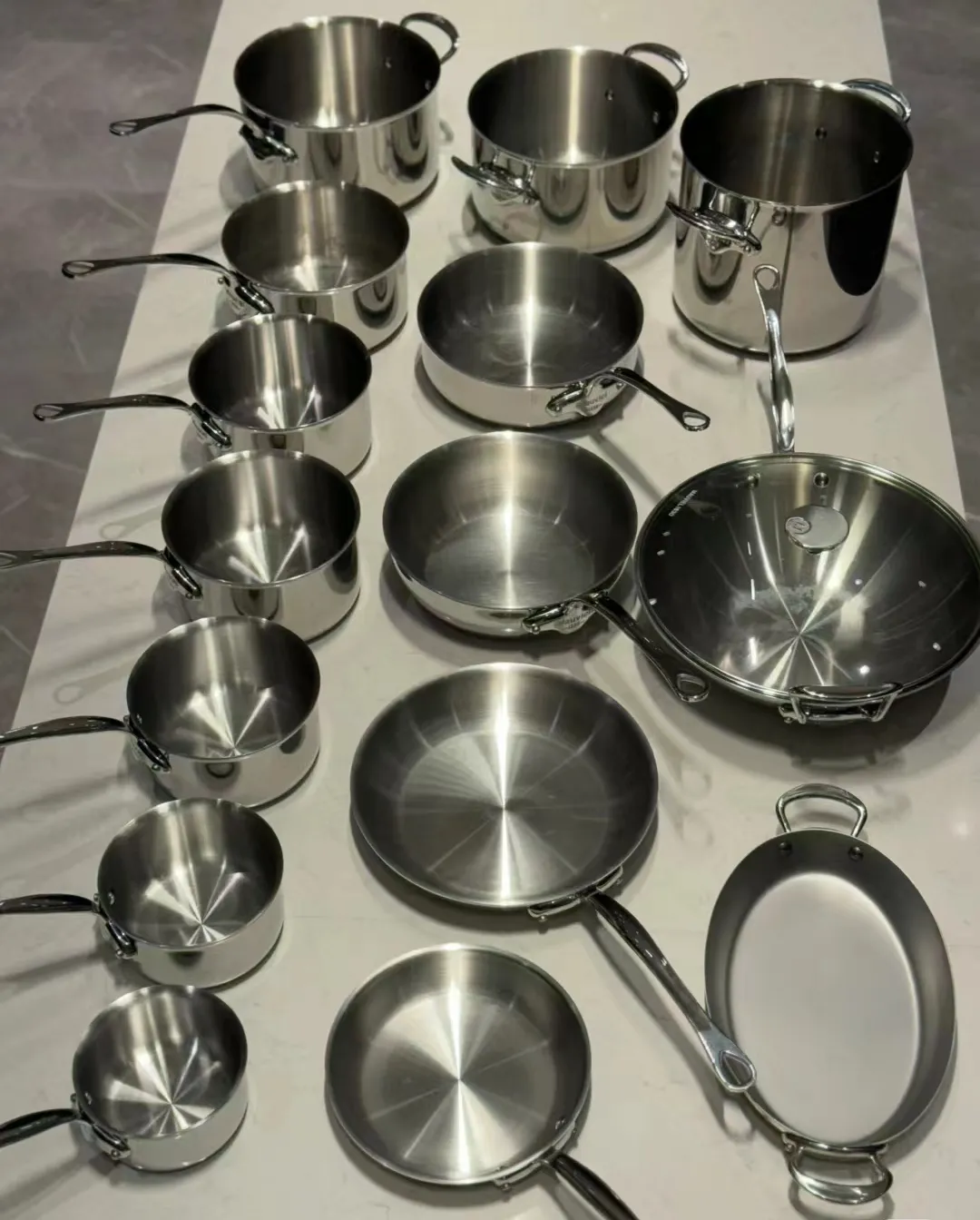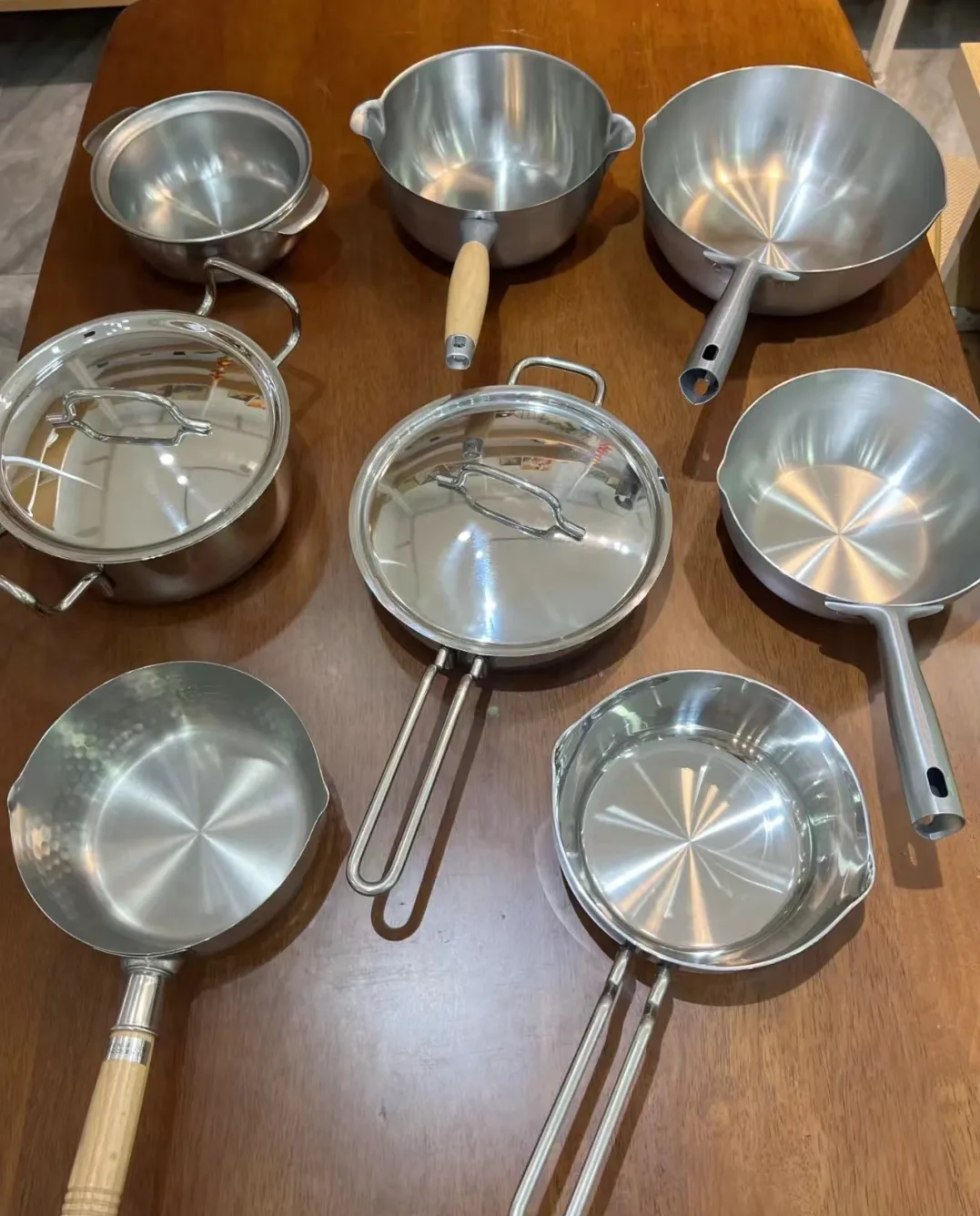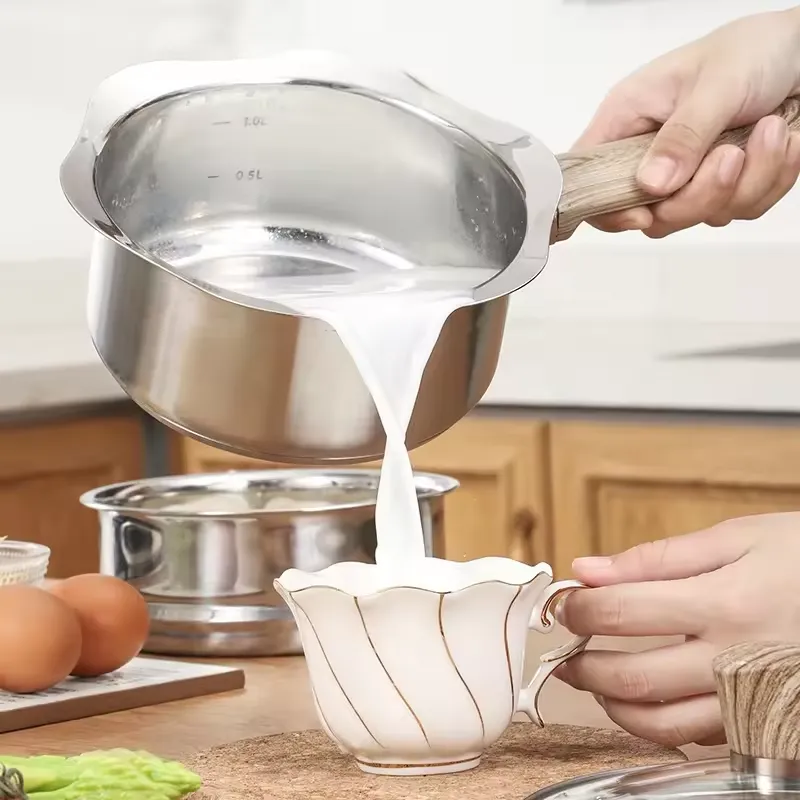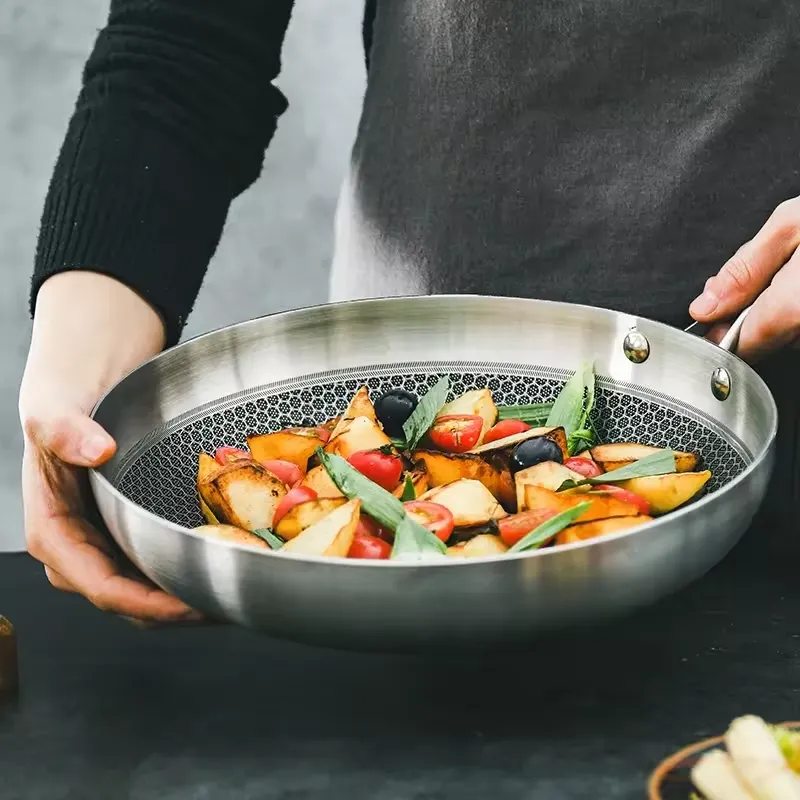ステンレス調理器具 は、耐久性、メンテナンスのしやすさ、スタイリッシュな魅力で名高い、現代の便利な調理器具の象徴です。出品者 複雑な構造を理解するステンレス製調理器具を選ぶ際に賢い選択ができるだけでなく、キッチンで欠かすことのできないこれらの調理器具を最適に使用することができる。
我々は ステンレス鋼調理器具 メーカーとサプライヤー を中国から輸入した。この記事では、私たちの工場で生産されるステンレス調理器具を例に、ステンレス調理器具の多面的な構造を深く掘り下げ、その重要な側面を解剖します。 材料選択, ステンレス調理器具の革新 複合ベースデザイン, 人間工学に基づいたハンドルの開発そして 蓋合わせ.これらの成分の組成を理解することによって、読者は良いステンレス鋼調理器具を正しく選択することができ、最終的には料理の芸術におけるユーザーと調理器具の間の調和のとれた関係を促進することができます。
ステンレス製調理器具の材質は?
ステンレス製調理器具の基本は、その素材構成にある。 304および316ステンレス鋼 304はステンレス調理器具の主流です。304は、18%のクロムと8%のニッケルを含有し、その卓越した耐食性と永続的な強度で有名で、堅牢な基盤を提供します。対照的に、モリブデンを2-3%含む316ステンレススチールは、耐食性を高め、海洋環境や塩辛い料理の調理に特に適しています。クロムを多く含む磁性430ステンレス鋼は、IHクッキングヒーターに適しています。
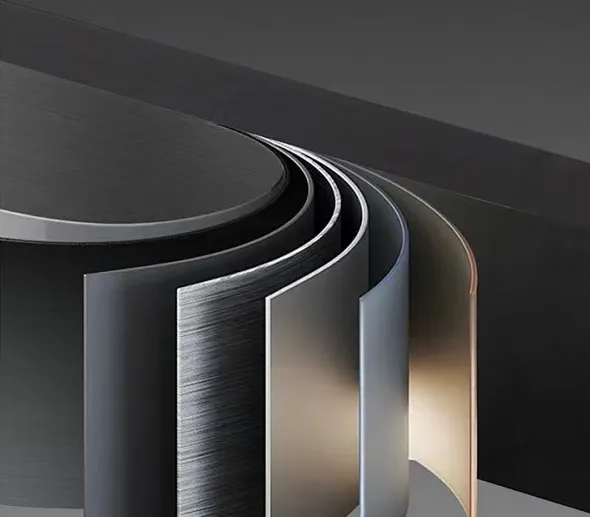
コンポジット・ベース設計
コンポジット・ベースは、熱伝導性を高める極めて重要な構造要素で、多層構造になっていることが多い。一般的な3層構造では、アルミニウムのコアをステンレスの層で包むことで、調理面全体に均等な熱分布が確保される。そのため 三層複合底ステンレス鍋 より複雑な5層設計には、さらに金属層が組み込まれ、効率と安定性を高めています。これらのベースの磁気外層は、IHクッキングヒーターとのシームレスな互換性を保証し、調理器具の適用性と汎用性を拡大します。
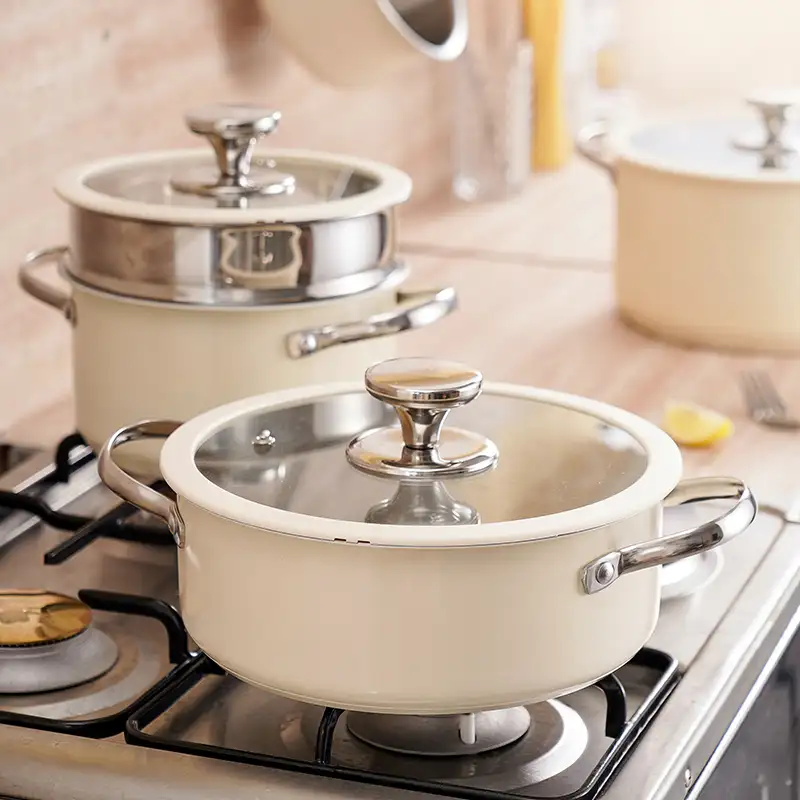
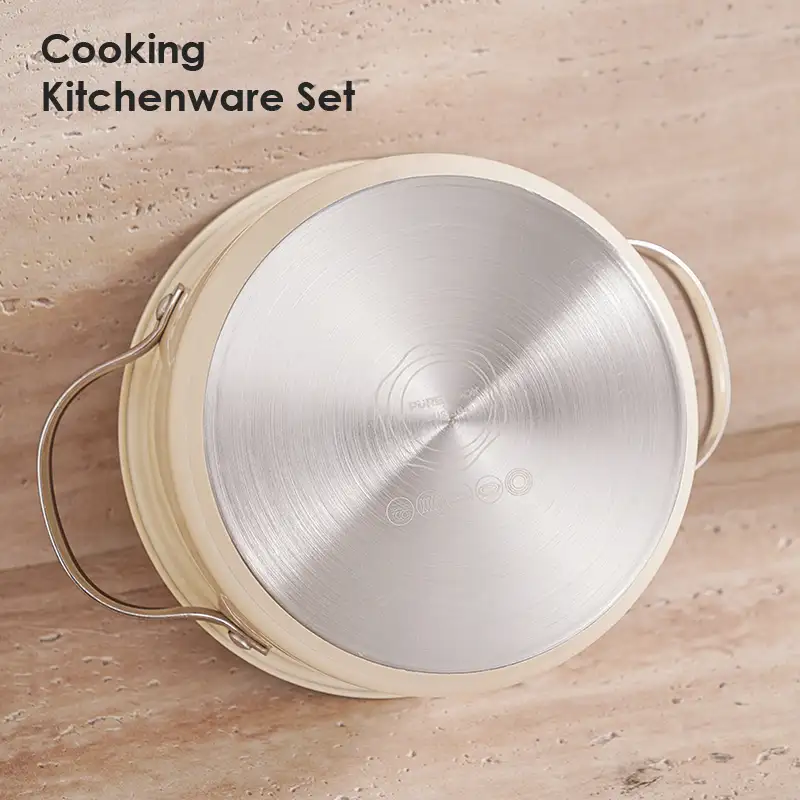
ハンドルデザイン
ハンドルのデザインはユーザー・エクスペリエンスに重要な役割を果たす, 快適性と安全性の両方に影響する。 ステンレスのハンドルは非常に頑丈ですが、長時間の調理では熱くなることがあります。その点、シリコン製やプラスチック製の取っ手は、金属製の取っ手ほどの耐久性はないものの、保温性に優れています。リベット留めされたハンドルは、耐久性と安定性の証であり、調理器具がユーザーの手の中でしっかりと固定されることを保証します。
蓋の構造
蓋の構造は、調理プロセスの効率と利便性に不可欠です。ステンレススチールの蓋は、耐久性と保温・保湿性に優れ、最適な調理条件を実現します。ガラス製の蓋は、目視で確認できる利点がありますが、破損を防ぐために取り扱いに注意が必要です。密閉性の高い蓋は、蒸気や熱の逃げを防ぎ、調理プロセス全体の効率を高めるため、非常に重要です。
結論
ステンレス製調理器具の構造設計 は、その性能や使い勝手と切っても切れない関係にある。これらの特性を深く理解することは、個々のニーズに最も適した調理器具を選ぶために極めて重要である。
ステンレス製調理器具の構造的な複雑さについての深い洞察と、専門家による選択ガイダンスについては、以下をご覧ください。 お問い合わせ またはニュースレターを購読してください。最新の製品情報や使い方のヒントをお届けし、徹底したサポートでお料理の楽しみを広げます。私たちと一緒に、キッチンでの体験をより豊かなものにしましょう!
お問い合わせ
ご遠慮なくお電話ください。joy@purecook.com
ご遠慮なくお問い合わせください。広東省潮州市潮安区菜塘鎮華僑村仙華路68号

